There’s an irresistible momentum that sweeps me up every time I see a great-looking but unfamiliar plant. If at all possible, it must be tracked down and brought home. And then the game begins: Where to plant it?
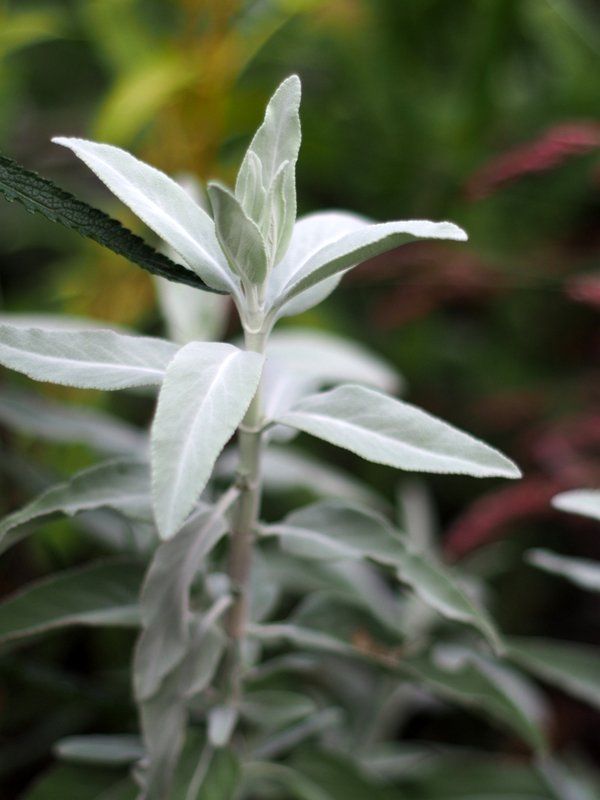
Garden designer Sue Dadd recently brought this sage to my attention, a hybrid of two California native sages, Salvia apiana and Salvia leucophylla, introduced in 1999 by the Rancho Santa Ana Botanic Garden, which is where I bought my gallon plant over the weekend at their Grow Native Nursery. I had just seen it planted en masse in a garden of Sue’s design and couldn’t get it out of my mind. It was one of those horticultural epiphanies, an absolutely thrilling sight, all shimmer and soft reflective shine with wands of pale lilac bloom spikes swaying around a large variegated agave.
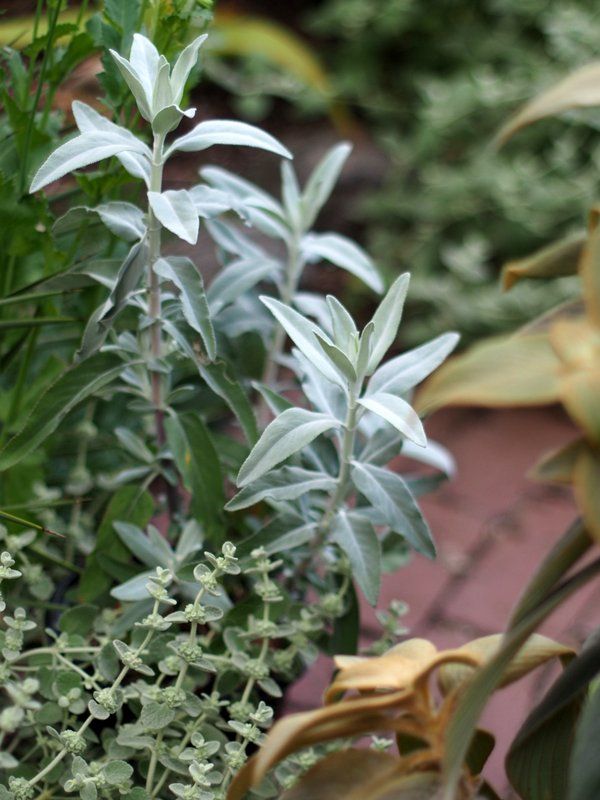
You can image search all day long, but there’s very few photos available and not much information either on this gorgeous plant. And that lack of anecdotal documentation is undoubtedly due to its size. It’s huge. Easily to 6 feet with some reports of 9 feet tall and maybe half that in width. How many gardens can accommodate such a bruiser? And it’s not like I’m afraid of big plants. I love how they anchor the garden and draw the eye away from the busy, busy planting underfoot.

I didn’t even know at the time that this was a Rancho Santa Ana introduction. I was visiting to catch their wildflower show and stopped in briefly at the nursery. There were some nice Agave utahensis for sale, one of which I grabbed. As serendipity would have it, an elegant white sage sat amongst other native salvias on their benches, and the tag said ‘Desperado.’ Delicious ripples of recognition ran down my spine. Knowing its fated size from Sue (“It gets big“), I picked it up, put it back, picked it up again, carried it to the checkout kiosk, abandoned it midway, then finally resolved to buy it, if only to honor the plant scientists who dreamed up such a beautiful vision and made it real and available in a one-gallon pot. Or maybe the hybrid occurred naturally, but still a human had to recognize the potential and propagate it. Science!
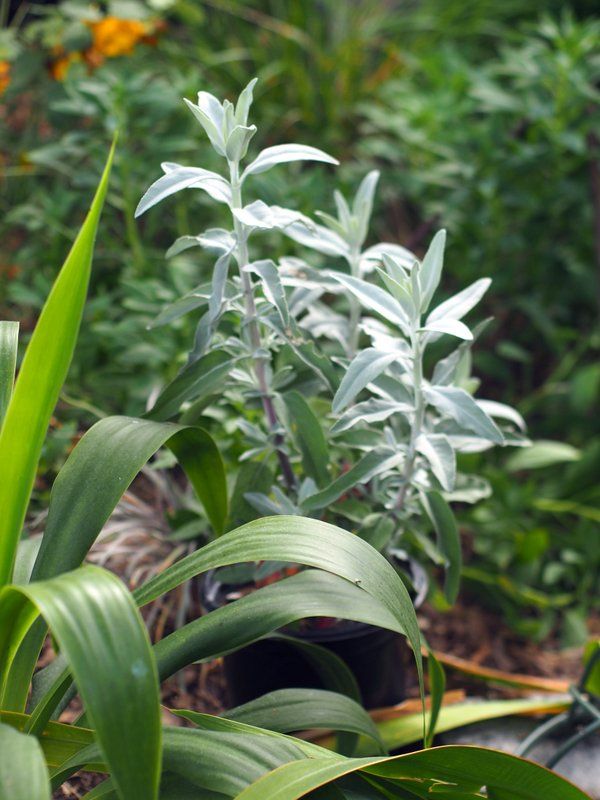
Back home in my garden I played a pretend game of “dress up” with ‘Desperado,’ trying out various sites and associations, knowing full well that, ultimately, there just isn’t room to accommodate it here. With Beschorneria albiflora, the light and water requirements would be a match. I was told at Rancho Santa Ana that this sage, unlike some natives, tolerates garden conditions and doesn’t need to be kept absolutely dry during summer.
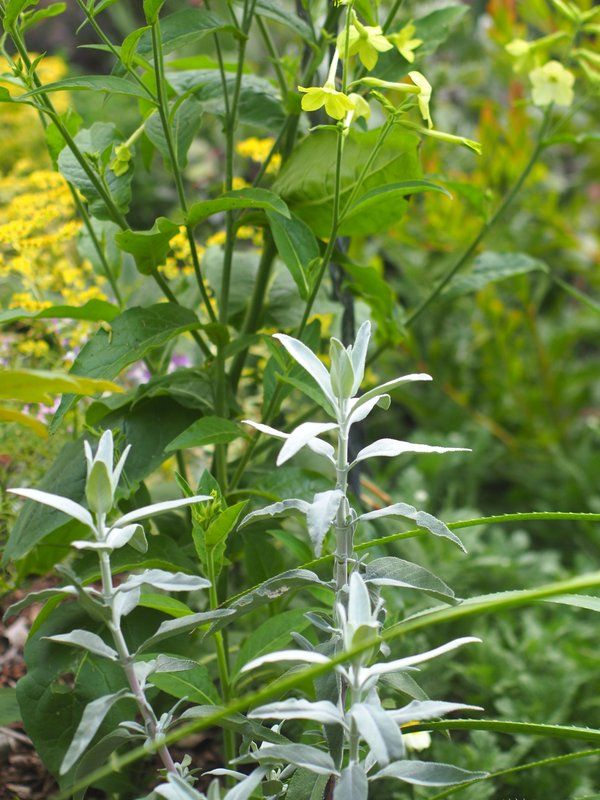
Nice with lime green nicotianas.
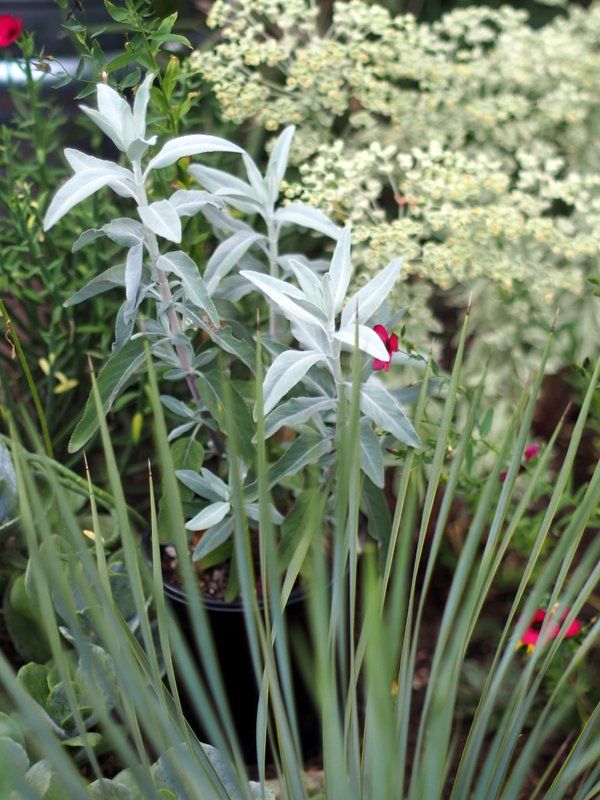
It could easily handle some of the driest spots, too, with Yucca rostrata and euphorbias. And the hummingbird show would be epic.
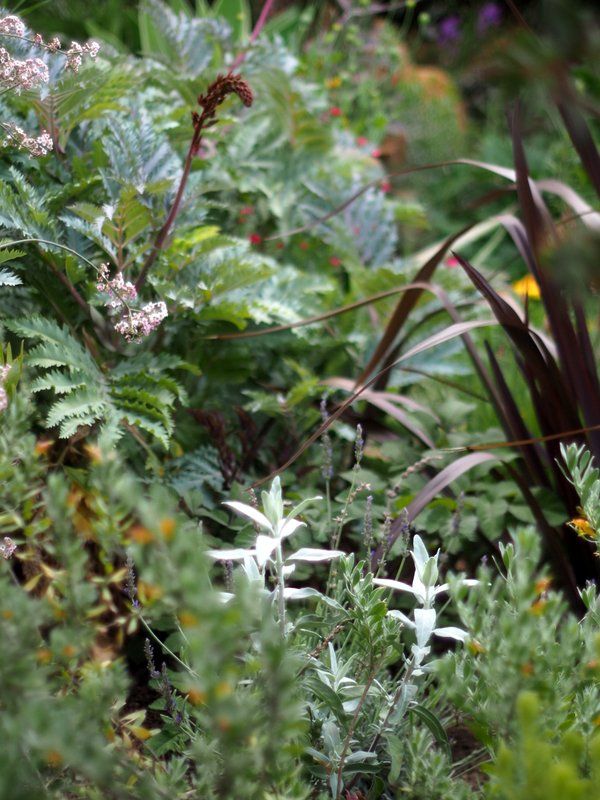
Or stir up some drama and high contrast with burgundy phormiums.
The Grow Native Nursery has demonstration gardens that are abloom with all sorts of interesting natives right now. In a border alongside the growing greenhouse was a compact version of another beautiful giant, the native buckwheat St. Catherine’s Lace, appropriately named Eriogonum giganteum. Identical in all respects except size, it was the designer plant of my dreams: Eriogonum giganteum var. compactum. I immediately inquired as to how I could get my hands on one and was told, for now, there are none to be had. That display bed was for propagation only. I’m certain I could fit that buckwheat somewhere in my garden.

I do have someone in mind for a gift of ‘Desperado.’ This big, bodacious sage will have to be strictly catch and release for me. For zones 8-10 but can be grown as an annual too.
edited for veracity 4/25/17:
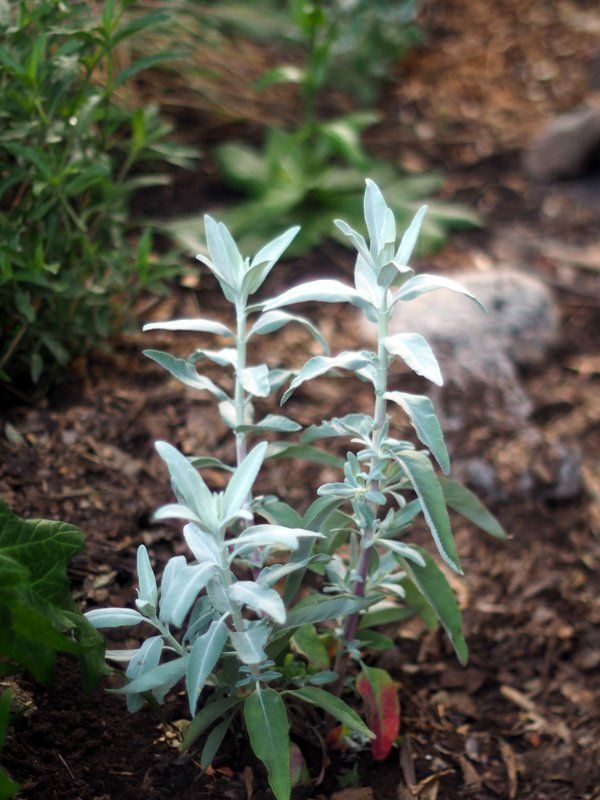
P.S. Changed my mind again. It’s in the ground, very close to the back south wall. An Echium simplex I was letting develop seeds kindly gave up its seat on the bus.

I completely support the buy-plant-dig when it gets too big. Then you buy another -if you can find it again of course. There’s always the container option.
Beautiful! Now I’m thinking where a 6ft wide plant would fit… I love our native sages, and one that can withstand garden conditions would be great!
Where would we be without the salvias and this one has a beautiful leaf. Such a pure silvery color. A brightener in any garden. It looks as though it would be easy to propagate too. I often stick cutting in the ground in the winter and they root with no problem. It is hard to imagine 9′ but then there are lots of plants that fool you that way.
@Kathy, I can see that you’re the devil on my shoulder. Maybe a stock tank could handle it….?
@Renee, the leaves are soft like lambs ears. I wish I had a photo of it in bloom. That soft lilac color with the silvery leaves is a knockout.
@Jenny, that’s a good point about how easy salvias are to root. Maybe I’ll take some small starts before giving it away.
Oh, lordy! What a plant, and I was just at RSABG yesterday, but kept my eyes trained on the four inch pots at the Grow Native nursery. I’m always gun-shy about planting natives in the spring, they take a bit of extra attention and finesse as we approach our summers. Hoping for June gloom, as I did manage to find a dozen or so little plants to tuck in before we sizzle and dry out. You have planted the seed of lust, though…desperate for Desperado. Looking forward to future photos of your newest addition.
I love those photos of the silvery newcomer in spot after spot — like a garden Zelig!
How big were the examples in Sue Dadd’s design? It would take quite a garden to handle more than a few full-grown ones. But that color sets off everything else so well that it’s easy to imagine a really big space using them as lead-your-eye focal points.
I walk around conducting dress rehearsals with plants all the time. I’m glad you found a place for your Salvia, temporary although it may be.
@Kris, it wouldn’t be summer without trialing new plants, right?
Beautiful plant worth squeezing in. Ultimate size be damned.
Good morning
I bought almost seven year ago a white Sage called “Desperado” from a french man that had the mother plant. I fell in love right away not only for the color of the leaves but also for the flowers. I coudn’t make cuttings because the stem is empty. May be I’ll try with old wood. It’s a hybrid so I can’t plant the seeds. Is it possible to buy it somewhere in California? I can’t find it anywhere. Only the S. Apiana , Clevelandi, Allen Chickering,
Leucophylla in 2 nurseries in France. I live in Turin Italy. My son now lives in Santa Cruz near Monterey. Kind regards. Carla Gillio
Santa Barbara Botanic Garden’s nursery listed it for 2018, so you might try calling them, (805) 682-4726, for this year’s availability (https://www.sbbg.org/sites/default/files/pdfs/2018%20Fall%20Sale%20AVAILABILITY%20LIST.pdf). It’s not available local this spring from Los Angeles native plant nurseries like Theodore Payne, Rancho Santa Ana, but might become available later in the season. I never did see the flowers in my garden! It was growing huge in too little sun with not much chance for flowering. Yerba Buena Nursery in Northern Calif., Half Moon Bay, (650) 851-1668, might be another possibility. Good luck!
I got mine 3-4 years ago from Theodore Payne. Their inventory shows 2 plants— 5 gallon size. https://theodorepayne.org/plants-and-seeds/nursery/inventory/
Good luck! I love mine.